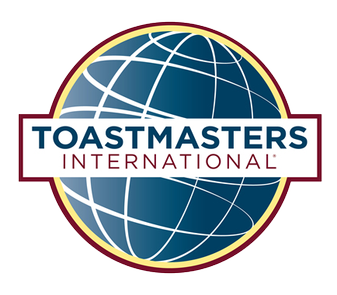For many Toastmasters, Table Topics can be one of the most challenging yet rewarding aspects of our meetings. The ability to think on your feet and deliver a coherent, engaging response to an unexpected question is a valuable skill, both in public speaking and in everyday life. At Winchmore Hill Toastmasters, we understand the importance of mastering this art and have developed multiple strategies to help you shine during Table Topics sessions.
Step 1: Stay Calm and Collected
The first and perhaps most crucial step is to remain calm. When called upon, take a deep breath and approach the lectern with confidence. Remember, everyone in the room is supportive and understands the challenge you’re facing.
Step 2: Listen Carefully
Before you begin to speak, listen carefully to the Table Topics Master’s question. Make sure you fully understand the prompt. If necessary, repeat the question aloud to clarify and buy yourself a few extra seconds to think.
Strategy 1: The P.R.E.P. Method
A clear structure can make your response more coherent and impactful. A common and effective structure is the P.R.E.P. method:
• Point: Start by stating your main point or opinion clearly.
• Reason: Provide a reason to support your point.
• Example: Share a relevant example or personal anecdote to illustrate your reason.
• Point: Conclude by restating your main point, reinforcing your position.
For example, if the question is, “What is your favorite season and why?” your response might look like this:
Point: My favorite season is autumn.
Reason: I love autumn because of the cooler weather and the beautiful foliage.
Example: Last autumn, I went on a hiking trip through the forest. The sight of the vibrant leaves and the crisp, cool air was incredibly refreshing.
Point: Therefore, autumn stands out as my favorite season due to its unique beauty and pleasant climate.
Strategy 2: The Past, Present, Future Framework
This strategy works well for questions about experiences or predictions. Break down your response into three parts:
• Past: Share a relevant past experience.
• Present: Describe the current situation or your current thoughts.
• Future: Predict or envision the future related to the topic.
For instance, if asked, “How do you think technology will change in the next 10 years?” you could respond:
Past: In the past, technology was primarily focused on improving communication, such as the invention of the telephone.
Present: Today, we see technology enhancing every aspect of our lives, from smart homes to AI-driven personal assistants.
Future: In the next 10 years, I believe technology will become even more integrated into our daily routines, potentially leading to advancements in healthcare and sustainability.
Strategy 3: The W.I.S.E. Technique
For more abstract or philosophical questions, the W.I.S.E. technique can provide depth and structure:
• Wisdom: Share a piece of wisdom or a quote that relates to the topic.
• Insight: Offer your personal insight or interpretation of the wisdom.
• Story: Tell a short story or anecdote that illustrates your point.
• End: Conclude with a closing thought that ties everything together.
If asked, “What is the key to happiness?” you could use the W.I.S.E. technique:
Wisdom: “Happiness is not something ready-made. It comes from your own actions.” – Dalai Lama
Insight: This quote reminds us that happiness is an active pursuit, not a passive state.
Story: I once met a man who, despite facing numerous hardships, always found ways to give back to his community. His actions, rather than his circumstances, brought him true happiness.
End: Therefore, happiness is about taking deliberate actions that align with our values and bring joy to ourselves and others.
Strategy 4: The A.C.E. Approach
For opinion-based questions, the A.C.E. approach can help you articulate a balanced perspective:
• Acknowledge: Acknowledge the complexity or validity of different viewpoints.
• Counterpoint: Present your counterpoint or main argument.
• Evidence: Provide evidence or examples to support your argument.
For a question like, “Is it better to work in a team or independently?” you might respond:
Acknowledge: Both working in a team and independently have their own advantages. Teams can foster collaboration and creativity, while independent work allows for deep focus.
Counterpoint: Personally, I believe working in a team is more beneficial in most scenarios.
Evidence: For example, in my previous job, our team projects always produced more innovative solutions than individual efforts due to the diverse perspectives and collective brainstorming.
Be Yourself and Embrace Mistakes
Authenticity is key. Speak from the heart and share your true thoughts and feelings. Your genuine enthusiasm and sincerity will engage the audience and make your response more memorable. Remember that mistakes are a natural part of the learning process. If you stumble or lose your train of thought, don’t worry. Pause, gather your thoughts, and continue. The Toastmasters environment is supportive, and every member has experienced similar challenges.
Conclusion
Mastering Table Topics is an invaluable skill that can boost your confidence and enhance your public speaking abilities. By staying calm, listening carefully, using structured strategies like P.R.E.P., Past-Present-Future, W.I.S.E., and A.C.E., practicing regularly, and embracing mistakes, you can improve your impromptu speaking skills and make a strong impression during Table Topics sessions. At Winchmore Hill Toastmasters, we are dedicated to helping you succeed and look forward to seeing you excel in your next Table Topics challenge.
Join us at our next meeting and put these strategies into practice. Happy speaking!
